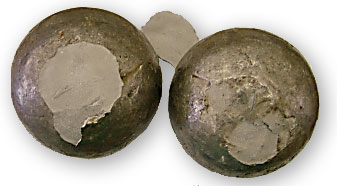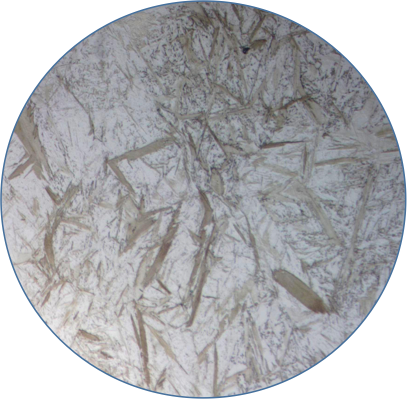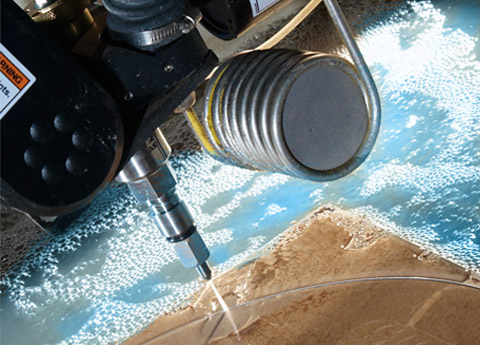Metallurgical Examination of Grinding Media Balls
Mill Grinding Media Balls
LMATS provide comprehensive assessment of the structure, hardness and quality of grinding media balls.
LMATS currently perform extensive grinding media testing for a number of major mining operations, both in Australia and overseas Major Mining Operations (end users) and also, the OEM’s (Original Equipment Manufacturers of Grinding Media Balls and Grinding Media Rods).
Grinding media balls form the major portion of the consumable cost of mineral processing plants.

Poor quality grinding balls influence the whole grinding system, including ball consumption, effectiveness of grinding and power consumption thus significantly impacting on the cost of comminution. High wear rates not only increase ball consumption rates but can also impact product quality and, in some cases, increase costs due to increased reagents and/or lower efficiency of downstream processing and extraction.
It is therefore essential that manufacturers have a robust quality control programme (QC) and that end users monitor ball quality and service performance on a regular basis.
Grinding balls can fail due to inappropriate chemical composition, hardness and microstructure.
Typical failures can include half balls, shelling, capping, surface spalling and misshapen balls. High wear occurs due to incorrect hardness and microstructure.
NATA & ILAC Certified testing of grinding ball quality control programmes include the inspection of each shipment to verify correct supply, and statistical sampling for further testing. A typical test programme will include visual inspection, hardness testing at the surface and through thickness profile, chemical analysis, macro and microstructural examination. These control programmes can be tailored to suit individual customer requirements as required.
| Tests | Parameter(s) monitored |
| Visual inspection: | Ball shape, surface finish, grooves and folds, flaws. |
| Hardness Testing: | Hardness level which is related to wear performance. This is the basic QC test adopted by the ball supplier. |
| Average volumetric hardness determined from a hardness traverse. | Indicates wear performance, residual stress level. Typically performed at 2 mm spacing commencing 1 mm from surface, rather than at 5 locations, giving an accurate hardness profile. |
| Macrostructure: | Segregation, cracking, folds, extent of hardening. |
| Microstructure: | Assess level of martensite, bainite, pearlite and austenite to assess the degree of transformation (related to toughness and hardness and therefore wear performance). |
| Chemical Analysis: | Full chemical analysis including trace elements assesses the grade of steel or cast iron used. Enables parameters such as hardenability or % carbides to be calculated. LMATS utilise PMI and Optical Emission Spectroscopy (OES) |
| Gas analysis: | (H, N, O) Gas analysis test for Nitrogen, Oxygen and Hydrogen content in the steel. If there is elevated amounts of these gasses it can result in cracking and spalling of the grinding media balls. |



This information will directly assist your production staff to:
• Monitor the expected life of grinding media during grinding operations to enable informed decisions regarding mill performance.
• Ensure that only consistent quality grinding balls are used, thus reducing the expense of either fast wearing balls requiring additional media or the fracture of over-hard media resulting in loss of mill efficiency.
In addition investigation of ball failures and examination of scats should also be conducted to understand the failure and wear mechanisms in order to improve on grinding ball performance.
The main quality control criteria to minimize premature failure will be discussed as well as examples of failures and causes.
The object of routine testing of grinding balls is to provide an indication of the quality of the balls being used or considered. Variations in the parameters monitored can be evaluated in conjunction with the performance of the grinding circuit.
This gives confidence that any milling issues are not media related or enables corrective action to be discussed with the supplier.
Internal tests are performed on a water jet cut surface, ensuring avoidance of thermal alteration that can occur if friction or wire ( spark erosion EDM ) cutting is used.

The water jet cutting method used on grinding media is also cost effective.
Advanced testing techniques such as residual stress measurement, evaluation of steel segregation or steel hydrogen levels are available.
Investigation of ball failures and material issues are performed. Mill liners and other components can also be investigated or advice provided.


